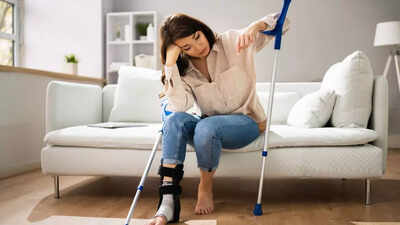ARTICLE AD BOX

Bone health is often overlooked until problems arise, yet it is one of the most important aspects of long-term wellbeing, especially for women. After the age of 30, bones naturally start losing density because the body’s peak bone mass is usually reached by the late 20s.
This means that, from the early 30s onwards, the rate of bone breakdown can exceed the rate of new bone formation. Combined with hormonal changes, lifestyle habits, and medical conditions, women are at greater risk of silent bone health issues such as osteopenia and osteoporosis. Without timely awareness, fractures, chronic pain, and loss of mobility may follow.
Bone health issues women must watch after 30: Osteoporosis, osteopenia, and more
1. Osteopenia (Early bone loss)Osteopenia is the stage before osteoporosis. It means bone mineral density is lower than normal but not yet severe enough to be classed as osteoporosis.
Women often develop osteopenia in their late 30s and 40s without any symptoms. Risk factors include poor diet, vitamin D deficiency, smoking, and lack of weight-bearing exercise. If not addressed early, osteopenia can progress silently into osteoporosis.2. Osteoporosis Osteoporosis is one of the most serious bone health issues affecting women, especially post-menopause, but its foundations are often laid decades earlier. According to a study published in Endrocrine Society, it causes bones to become weak, brittle, and prone to fractures, even from minor falls or movements.
Hip, spine, and wrist fractures are most common. Since osteoporosis is often called the “silent disease,” many women only discover it after their first fracture.3. Increased risk of fracturesAs bone density declines after 30, women face a higher risk of fractures. Fractures not only cause pain but can lead to long-term immobility and disability. Spinal fractures in particular can cause loss of height and a stooped posture. Fragility fractures, caused by something as simple as bending, coughing, or stepping awkwardly, are a growing concern.4. Vitamin D deficiency and calcium lossVitamin D deficiency is widespread, especially in urban areas where sun exposure is limited. Without enough vitamin D, the body struggles to absorb calcium effectively, leading to weaker bones. This is often compounded by poor dietary calcium intake, particularly in women who avoid dairy or do not consume fortified foods. A study published in the Journal of Bone and Mineral Research found that vitamin D insufficiency is a common risk factor for osteoporosis in otherwise healthy postmenopausal women, associated with increased bone remodeling and low bone mass.5. Joint and muscle weakness linked to bonesWhile not a bone disease itself, weak muscles and joints worsen the risk of fractures. Sarcopenia (age-related muscle loss) can start in the 30s and reduces the support system around bones, making falls and injuries more likely.6. Hormonal factors and early menopauseOestrogen plays a crucial role in protecting bone density. According to a study published in ScienceDirect, after 30, hormonal fluctuations during perimenopause and menopause accelerate bone loss.
Women who experience early menopause, whether naturally or due to medical procedures, face a much higher risk of rapid bone deterioration.
Why bone health of women declines after 30
Peak bone mass is reached by late 20s: After this age, bone building slows and breakdown increases.
- Lifestyle habits: Poor diet, smoking, alcohol consumption, and a sedentary lifestyle accelerate bone decline.
- Hormonal changes: Lower oestrogen levels contribute significantly to faster bone loss.
- Medical treatments: Some medications for thyroid disorders, cancer, or autoimmune conditions may reduce bone density.
- Weight loss drugs: Medications, when misused, can reduce lean muscle and bone mass.
Disclaimer: This article is for informational purposes only and does not constitute medical advice. Always consult a qualified healthcare professional before making any changes to your health routine or treatment.Also read | How type 2 diabetes increases your risk of cancer, stroke, and other diseases



.png)
.png)
.png)
















 2 days ago
3
2 days ago
3








 English (US) ·
English (US) ·